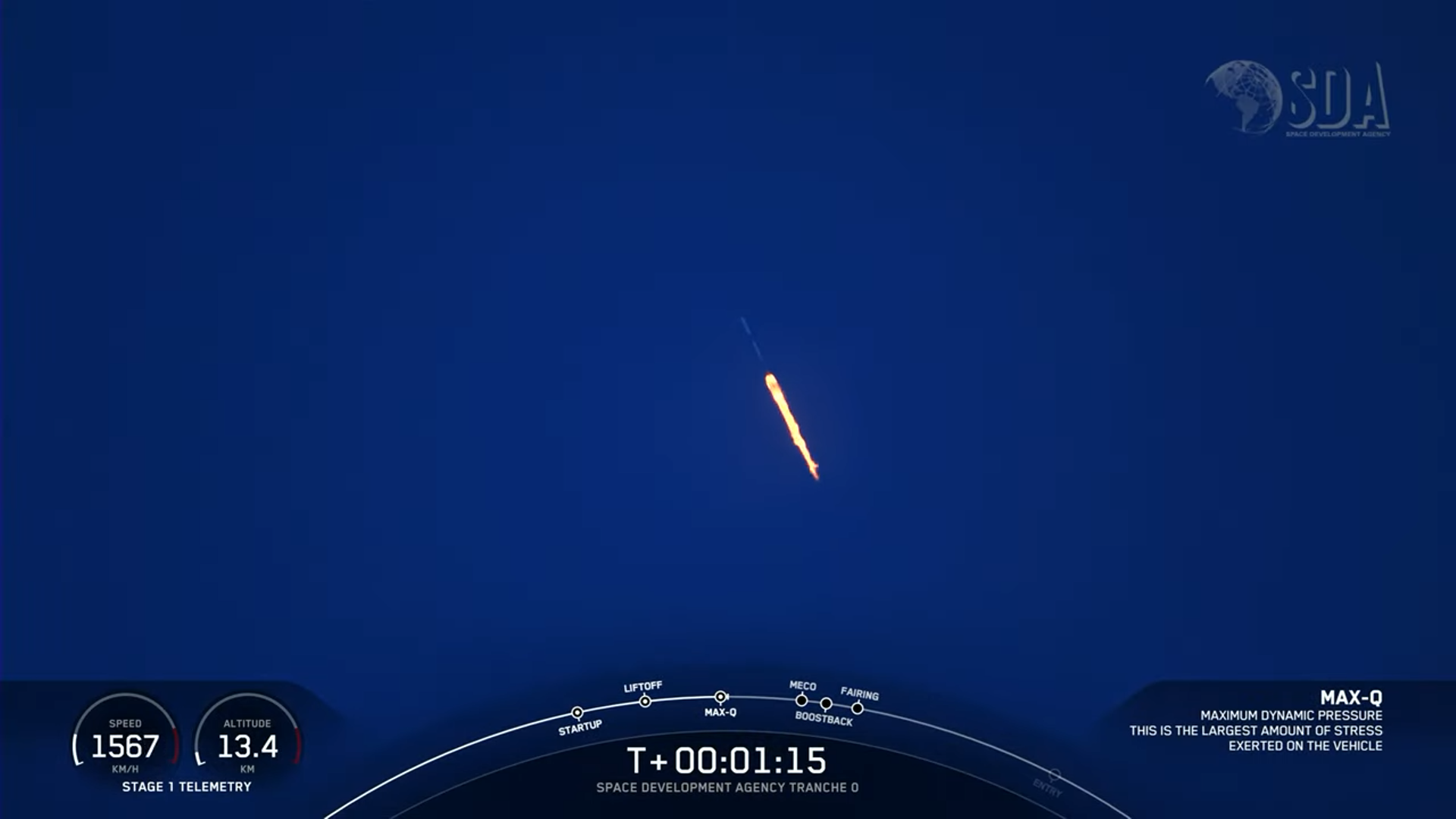
No sooner had the smoke and fury calmed from Wednesday’s launch of a four-times-flown Falcon 9 out of Cape Canaveral Space Force Station, Fla., than another booster rose from mountain-ringed Vandenberg Space Force Base, Calif., at 7:29 a.m. PDT (10:29 a.m. EDT) Sunday, kicking off a busy April for SpaceX. Sunday’s launch came after a last-second “Auto Abort”, just prior to T-0 on Thursday and three added days of delay “to allow more time for vehicle preparations”.
Aboard the B1075 core—which was embarking on her second flight, having entered the Falcon 9 fleet in January—were the initial ten satellites for “Tranche 0” of the Transport and Tracking Layer (TTL), flying on behalf of the Space Development Agency (SDA). Another batch of Tranche 0 birds are expected to follow atop another Falcon 9, later this year.
Headquartered at the Pentagon in Arlington, Va., the SDA was established back in March 2019 by then-Undersecretary of Defense for Research & Engineering (USD R&E) and former NASA Administrator Mike Griffin. It was formally transferred to U.S. Space Force jurisdiction last October and its remit encompasses deploying “disruptive” space technologies with an emphasis upon space-based ballistic and hypersonic missile defense using industry-procured low-cost constellations of satellites.
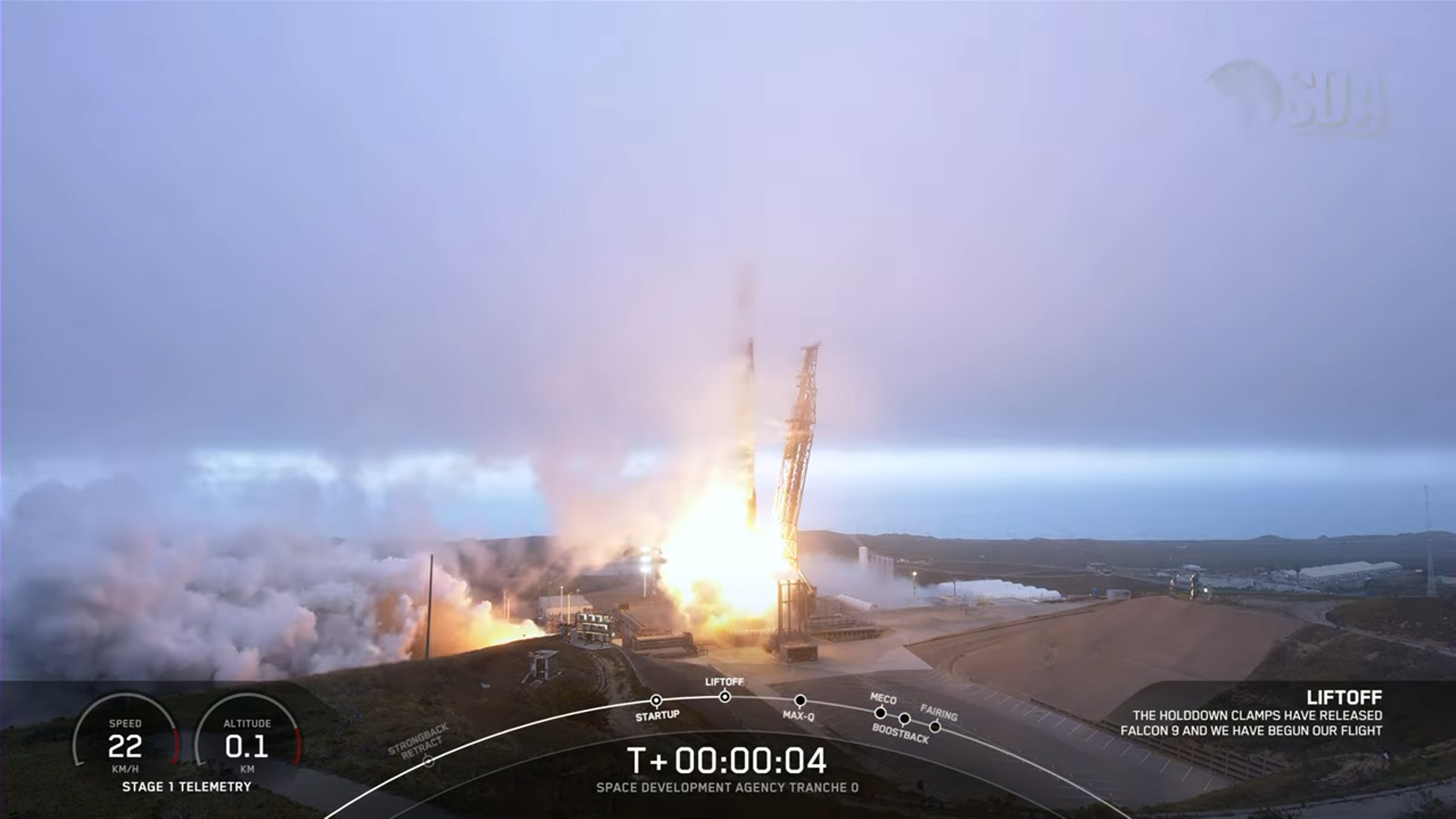
The SDA’s first stated priority was to create a “meshed” communications network in low-Earth orbit to furnish a backbone for follow-on systems. In April 2020, SDA Director Derek Tournear announced the agency’s intent to solicit “notionally 20 satellites to make up that mesh network”, with a plan that the so-called “Tranche 0” would be functional in orbit by the fourth quarter of Fiscal Year (FY) 2022.
Dr. Tournear outlined six core goals for the TTL program, which is expected to progress beyond Tranche 0, as the upgraded Tranche 1 comes online as soon as 2024, Tranche 2 as early as 2026 and early moves towards Tranche 3, possibly around 2028. The network seeks to demonstrate low-latency data transportation for warfighters and the acquisition and synthesization of data from multiple space-based sensors for relay via the TTL satellites directly to warfighters on the ground, at sea and in the air.
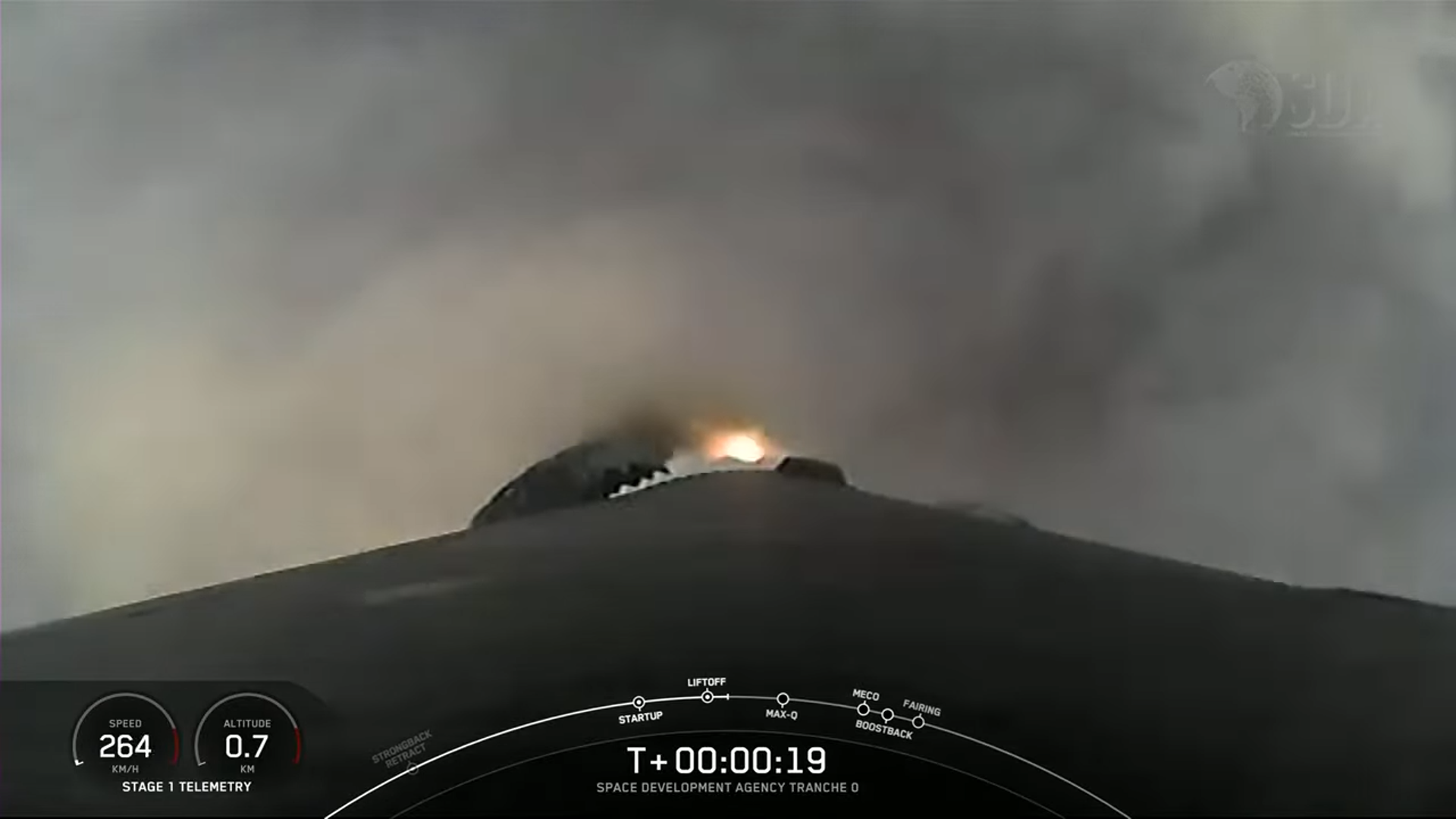
Additionally, TTL will demonstrate advanced Battle Management, Command, Control and Communications (BMC3). The satellites will have the capacity to transfer Integrated Broadcast System (IBS) data across the mesh to warfighters, as well as storing, relaying and transmitting NATO-specific Link-16 tactical communications data and establishing a common time-reference “signature”, entirely independently of the Space Force’s Global Positioning System (GPS).
The 20-strong Tranche 0 inaugural “layer” of TTL satellites are thus perceived as a means of unifying various space-based sensors to enable the Department of Defense’s Joint All-Domain Command and Control (JADC2) architecture to directly link tactical data transfer from space to warfighters on Earth. Tranche 0 will trial the ability “to integrate and provide interoperability with other warfighting entities” and facilitate the development of subsequent tranches, noted Dr. Tournear.
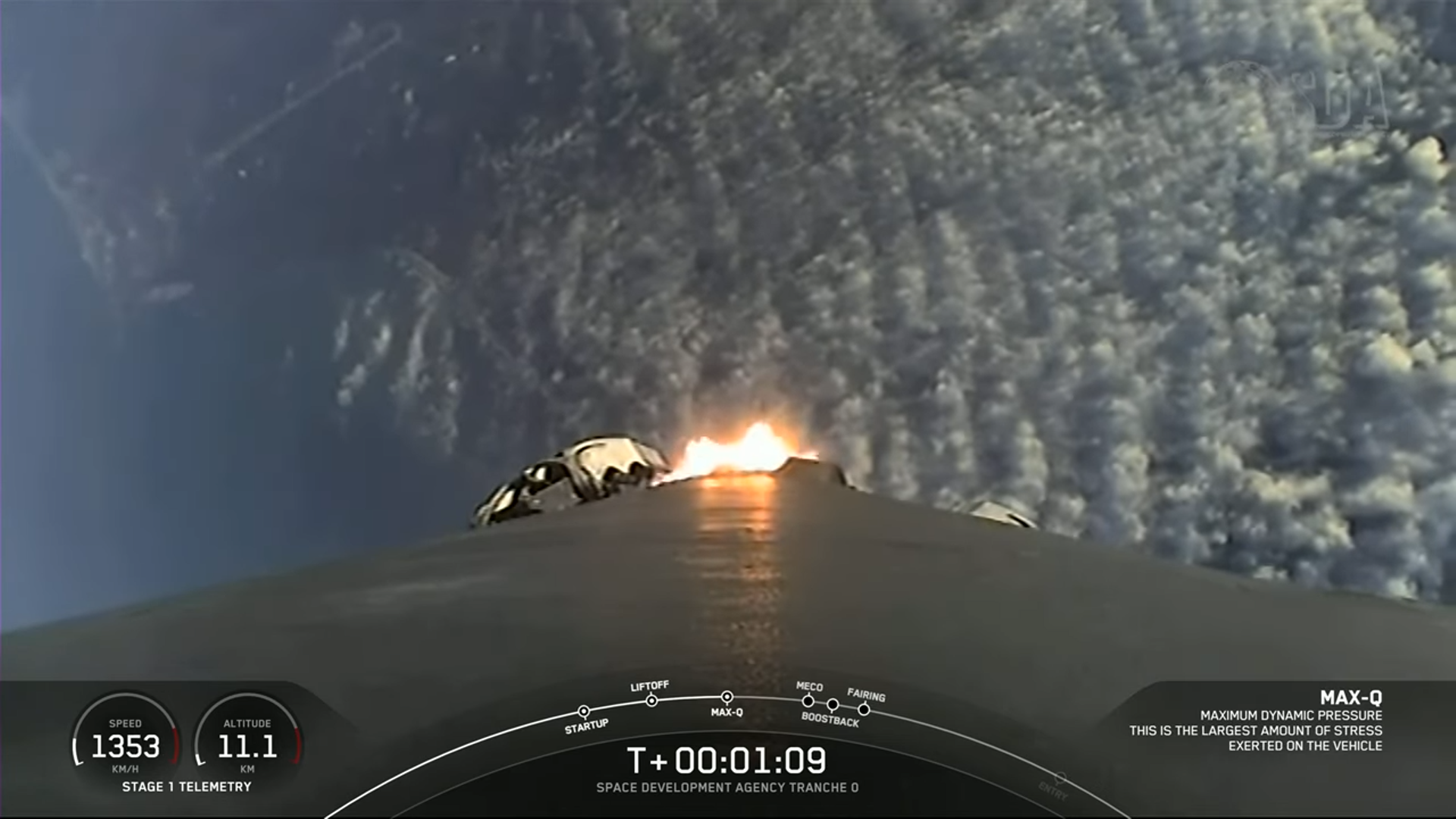
In August 2020, the SDA awarded a pair of Tranche 0 contracts, totaling $281 million, to York Space Systems and Lockheed Martin Corp. to “initiate the design, development and launch of constellations…with optical inter-satellite links capable of sending and receiving wide-band data to and from other space vehicles and ground stations”. As well as ensuring the on-time delivery of the spacecraft, the contracts encompassed “paths to optical inter-satellite link interoperability”.
Under the terms of the contracts, York and Lockheed Martin would each build two different classes of Tranche 0 satellites. The first class would house at least four optical cross-links, enabling them to communicate simultaneously with in-plane and cross-plane satellites, whilst the second class could connect directly to warfighters, via Link-16, with a pair of optical cross-links and maintain continuous communication with other in-plane satellites.
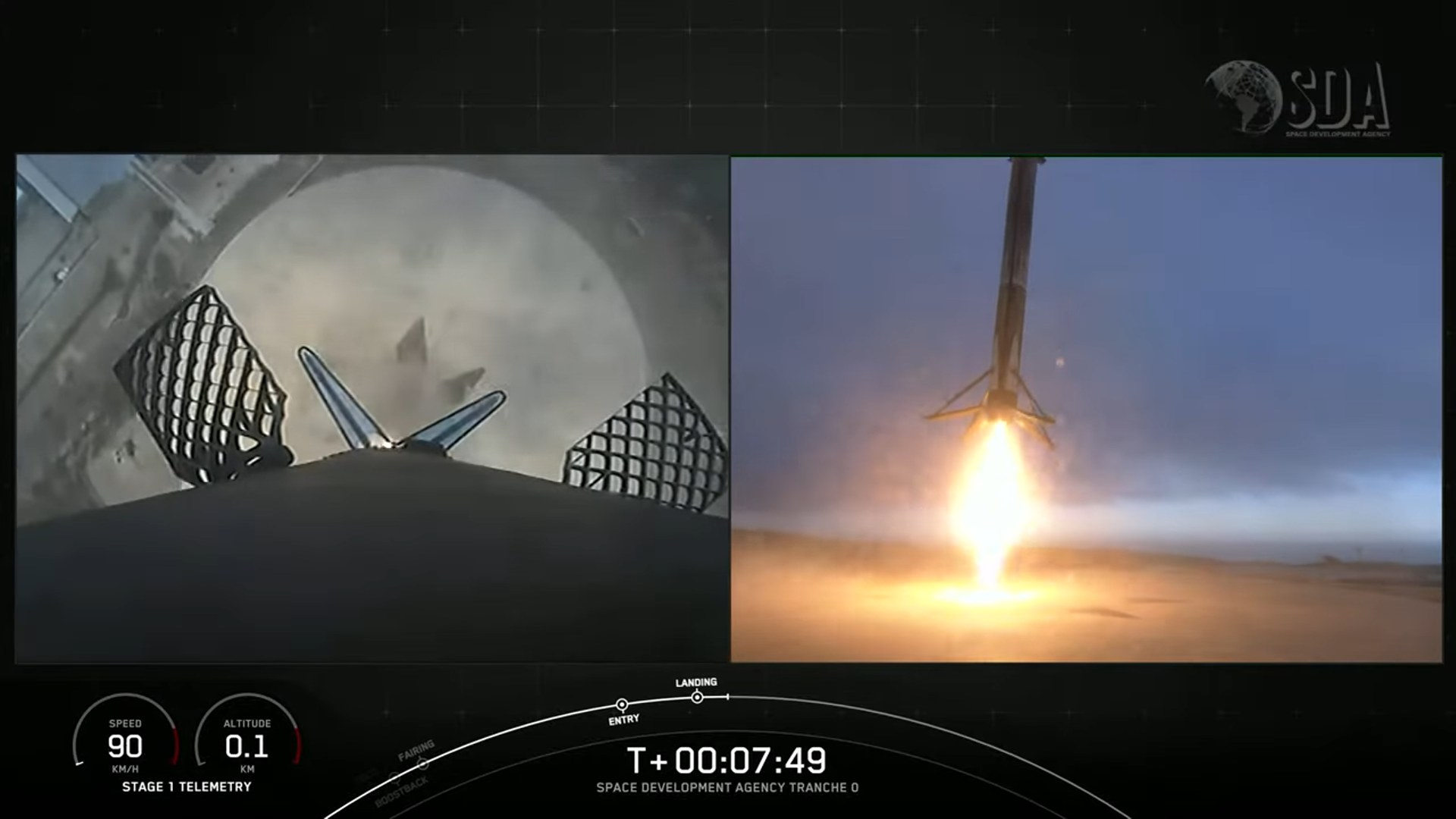
Later that fall, additional contracts worth a cumulative $342 million were awarded to L3 Harris Technologies, Inc., and SpaceX, to build eight additional Tranche 0 satellites. The contracts covered the “on-time delivery of space vehicles and optical Wide Field of View (WFOV) payloads” for hypersonic missile tracking.
And in October 2020, Perspecta Engineering, Inc., was awarded a task order worth $17.9 million for mission system engineering and integration of Tranche 0. Under its terms, Perspecta carries program responsibility for the on-orbit testing of this inaugural tranche, culminating in a so-called “Capstone Event”—originally targeted for FY23—to “demonstrate potential capabilities to the warfighter”.
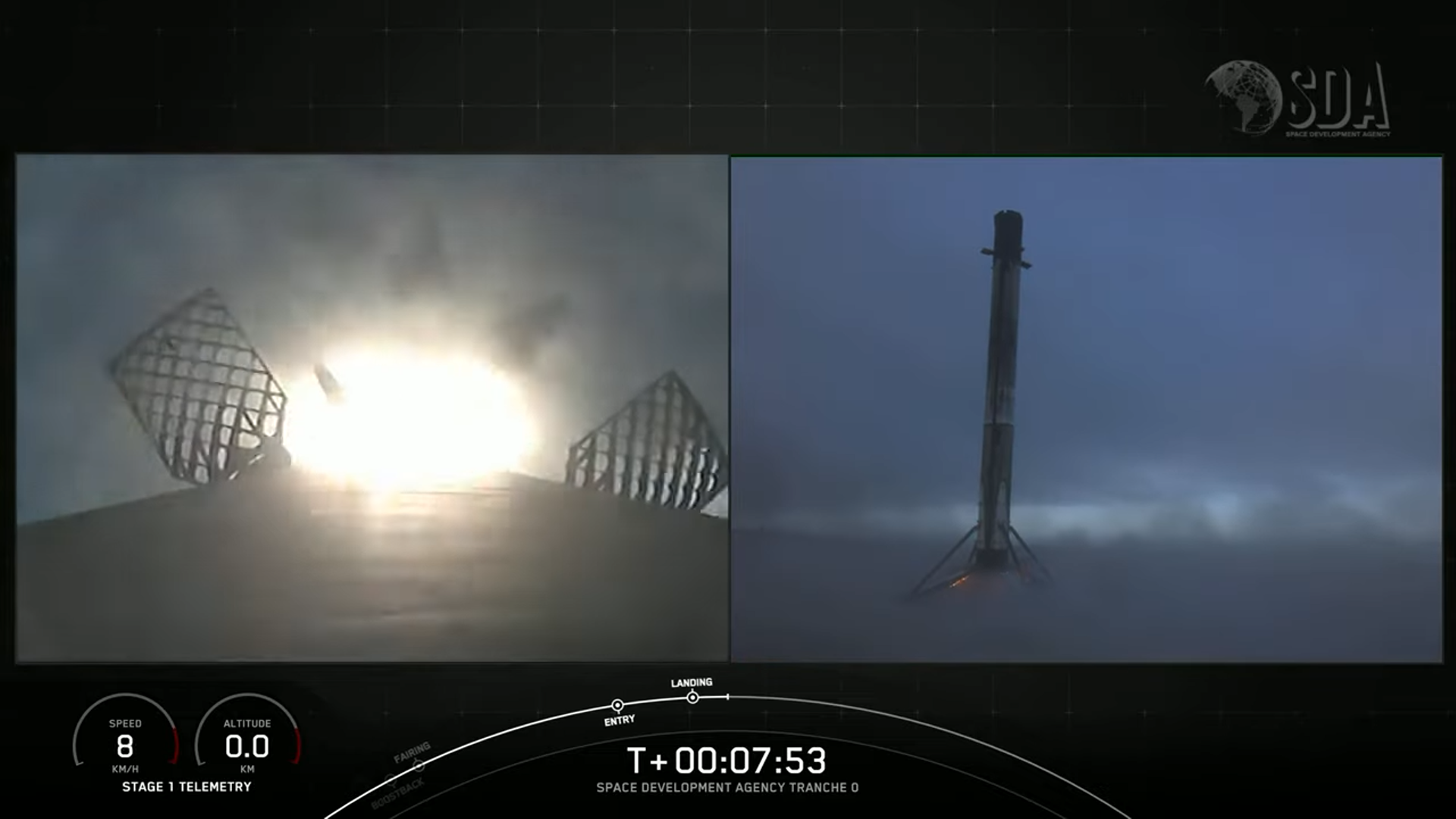
At the end of December 2020, the SDA awarded SpaceX a $150.45 million contract for a pair of Tranche 0 launches via Falcon 9 boosters out of Vandenberg. The first was scheduled for September 2022 “and the entire constellation on-orbit no later than 31 March 2023”.
But the opening Tranche 0 launch began to inexorably slip to the right: firstly to No Earlier Than (NET) December 2022, then early 2023 and eventually the end of March, due to a “noisy” power supply issue pertaining to eight of the York-built satellites.
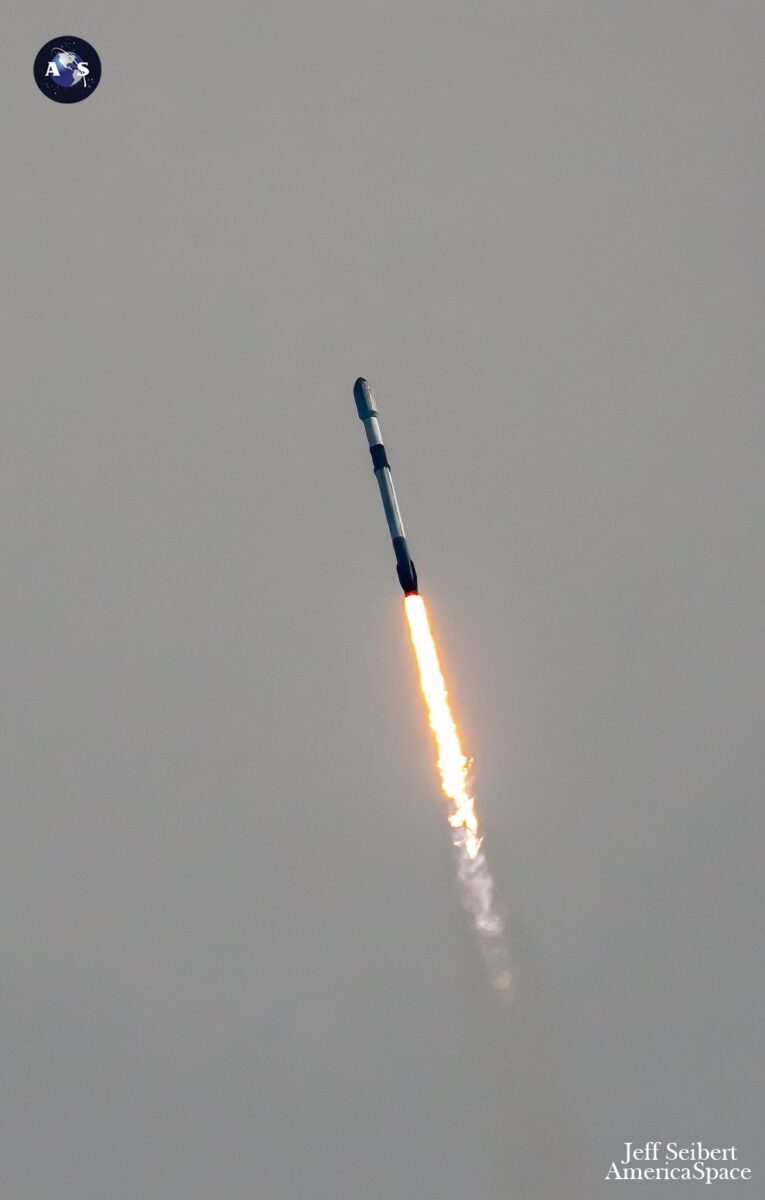
Elsewhere, efforts are underway for the next two TTL tranches. In February of last year, the SDA awarded contracts worth a combined $1.8 billion to establish the foundation for the Tranche 1 Transport Layer (T1TL), a mesh network of 126 optically interconnected satellites to be launched by September 2024.
Contracts were awarded to York, Lockheed Martin and Northrop Grumman Corp. “to each build and demonstrate effectiveness for two near-polar low-Earth-orbital planes of the six-plane T1TL”. Each of the three contractors will fabricate 42 satellites, with 21 slated for each of the six T1TL orbital planes.

Although the T1TL is described as “similar” to Tranche 0, this second-generation tranche includes optical communications terminals to facilitate at least four simultaneous optical communications links, a Link-16 mission communications payload, a Ka-band mission communications payload and a Battle Management Command, Control and Communications (BMC3) module to enable on-orbit data-processing, storage and fusion.
And in November 2022, the SDA began the formalized solicitation process for the Tranche 2 Tracking Layer (T2TL), which is expected to include a low-cost L-band Position, Navigation and Timing (PNT) payload. Tranche 2 also incorporates “targeted technology enhancements, mission-focused payload configurations, increased integration and greater production efficiencies”.

On Wednesday, SpaceX announced that it was targeting an opening launch attempt at 7:29 a.m. PDT (10:29 a.m. EDT) Thursday for the inaugural Tranche 0 launch, with a backup opportunity at the same time on Friday. It also noted that B1075 would return to touch down on solid ground at Vandenberg’s Landing Zone (LZ)-4.
But the clock dramatically stopped at T-3 seconds, with an ominous “Abort, Abort, Abort” call heard over the countdown net. “Falcon 9 had an auto abort,” SpaceX later tweeted. “Vehicle and payload are in good health; teams are resetting for a launch attempt tomorrow.”
However, it was not to be. Citing the need for “more time for vehicle preparations”, SpaceX slipped the launch firstly to Saturday 1 April, then Sunday 2nd. The first mission of 2023’s fourth month went smoothly airborne at 7:29 a.m. PDT (10:29 a.m. EDT) and eight minutes later B1075 pirouetted to a smooth landing at LZ-4, wrapping up the ninth successful landing of a Falcon 9 core on solid ground at Vandenberg since October 2018.
Although SpaceX does not issue a definitive launch manifest, the successful completion of a record-setting eight missions in March—and hopes that the Tranche 0 flight might achieve a ninth—renders it highly likely that a similar target will be aimed for in April. Definitively targeted to fly this month, perhaps as soon as 7 April, are the geostationary-bound Intelsat 40e High Throughput Satellite (HTS), co-manifested with NASA’s NASA’s Tropospheric Emissions: Monitoring of Pollution (TEMPO) as an integrated “hosted” payload.
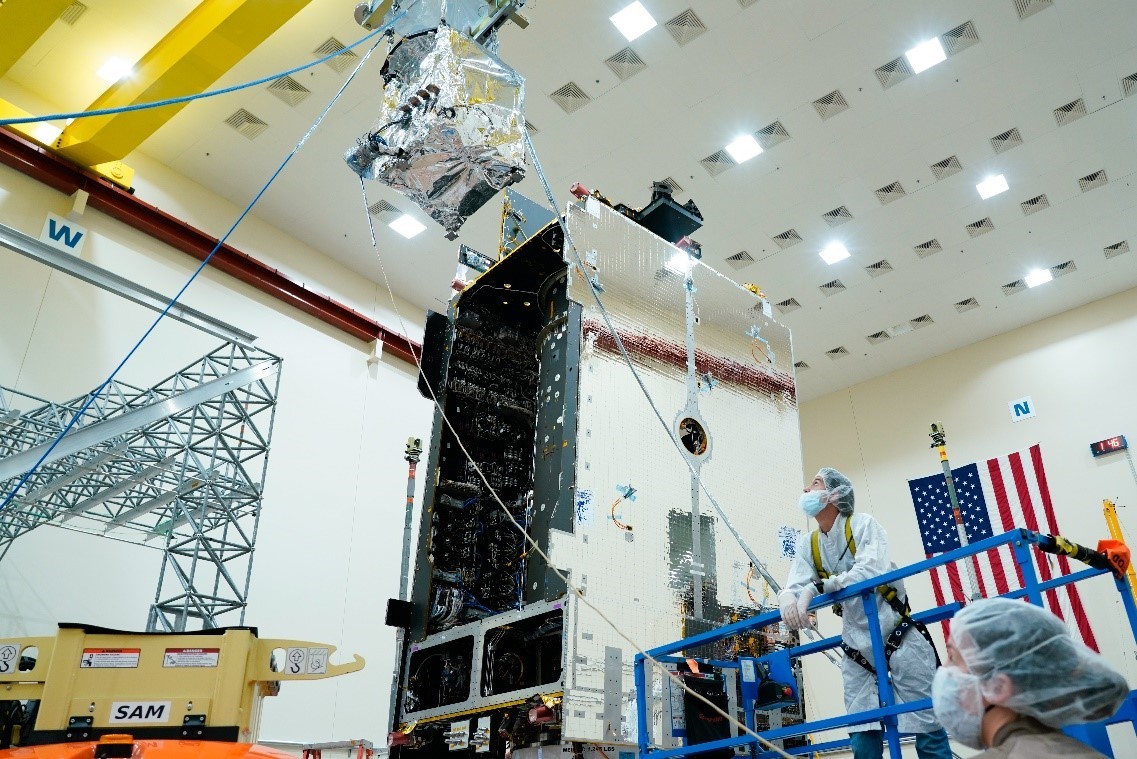
Both spacecraft have been built by Maxar Technologies, which won the TEMPO contract from NASA in July 2019 and the Intelsat 40e contract from Intelsat in February 2020. Based upon Maxar’s 1300-class bus—capable of supporting up to 70 transponders and a payload power of 5-12 kilowatts continuously throughout a satellite’s operational lifetime—Intelsat 40e will provide coast-to-coast coverage across North and Central America and its transponder suite covers the C-band, Ku-band and Ka-band
TEMPO comprises an ultraviolet/visible spectrometer to observe pollutants by measuring sunlight reflected and scattered from Earth’s surface and atmosphere. It will complete first-of-its-kind hourly, east-west scans of the American continents, from Mexico to northern Canada and from the Atlantic to Pacific seaboards, and its data will aid air-quality forecasting and timely public warnings of pollution incidents. TEMPO can also be configured to “dwell” on regions of interest, such as major fires or volcanic eruptions.
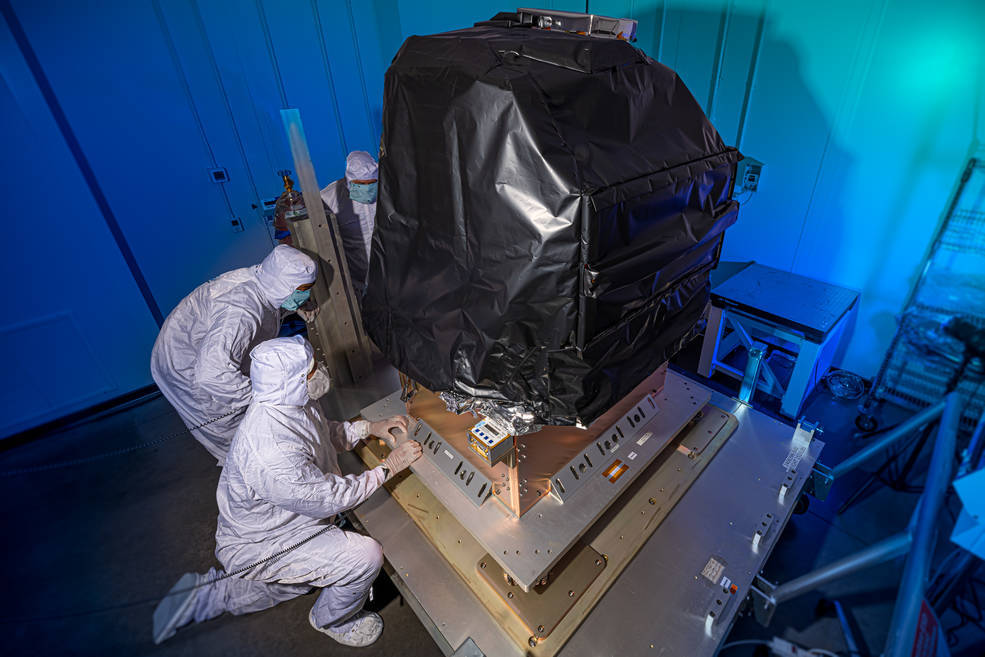
TEMPO’s primary instrument, built by Ball Aerospace at its Broomfield, Colo., facility, was delivered in May 2021 to Maxar’s site in Palo Alto, Calif., and in November of that year was integrated aboard Intelsat 40e. Launch was originally targeted for October 2022, but has since slipped into 2023.
“By hosting government payloads on our commercial satellites, Maxar can help government agencies access space without the cost of building a dedicated spacecraft,” Maxar reported in June 2021. “TEMPO…is a demanding payload on its host satellite but Maxar’s 1300-class spacecraft can support optical instruments with fine pointing, low-jitter and high-fidelity sensor data as either a hosted sensor or a dedicated mission.”
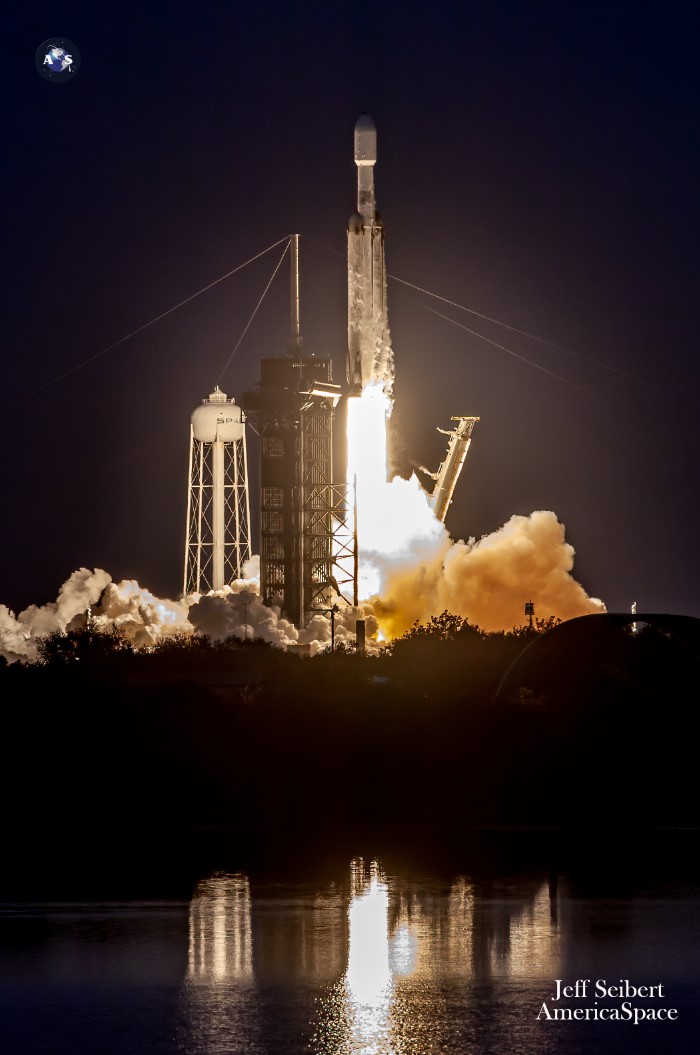
And another Falcon Heavy, possibly set to fly as soon as mid-month, will carry the first of three ViaSat-3 ultra-high-capacity broadband satellites, built by Boeing. Weighing nearly 13,000 pounds (6,000 kilograms), it will be directly inserted into near-Geostationary Earth Orbit (GEO) for a 15-year operational lifetime.
Each member of the ViaSat-3 Ka-band series of satellites will furnish more than one terabit per second—equivalent to 1,000 gigabits per second—of network capacity. This will deliver a global broadband network with sufficient bandwidth to deliver affordable, ultra-high-speed, high-quality internet and video streaming services.
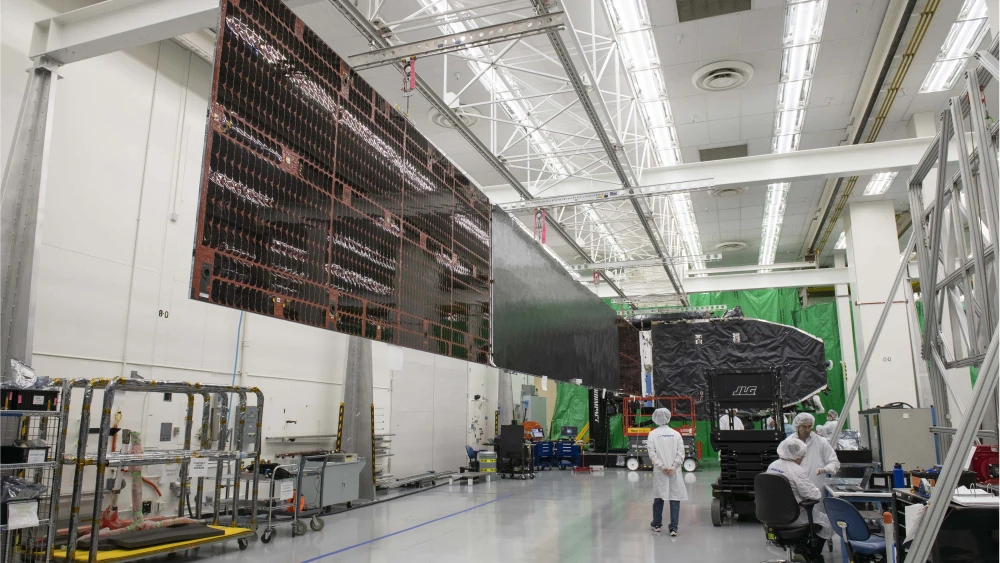
The first ViaSat-3, flying aboard the Falcon Heavy, will provide coverage of the Americas, with two follow-on satellites set to launch via ULA’s Atlas V and Arianespace’s Ariane 6 to focus on Europe, the Middle East and Africa (EMEA) and Asia and the Pacific (APAC). ViaSat contracted the ViaSat-3 Americas launch to SpaceX back in October 2018, with an expectation that it would fly in 2020-2022, although delays arose following the COVID-19 pandemic, together with contractor and supply-chain issues.
In June 2021, ViaSat announced that it had completed payload integration and performance testing at its Tempe, Ariz., factory and was ready to ship it to Boeing’s El Segundo, Calif., facility for integration into the satellite bus. Last September, ViaSat-3 Americas was fully integrated and by mid-October had completed its mechanical interface tests, ahead of its Final Integrated Satellite Test (FIST) late last November.
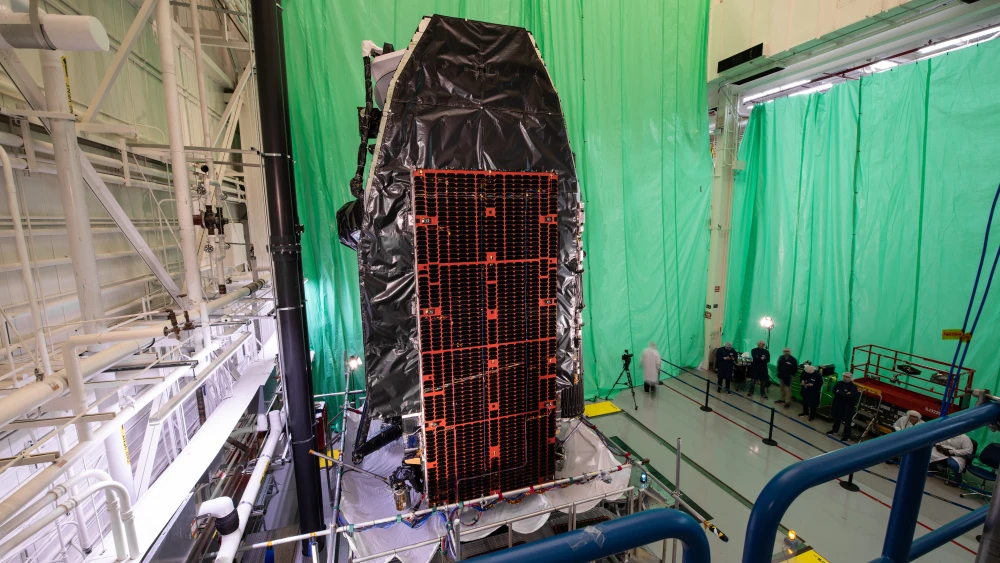
According to ViaSat, the Falcon Heavy was selected for the ViaSat-3 Americas launch on account of its ability to emplace the satellite extremely close to geostationary orbit. This will enable it to commence In-Orbit Testing (IOT) quickly, rather than spending weeks or months maneuvering to its optimum position.
Other missions earmarked for April include the multi-payload Transporter-7 “rideshare”, the next batch of O3b mPOWER broadband satellites and an initial pair of WorldView Legion Earth-imaging satellites for DigitalGlobe. That figure does not include anticipated launches of further flat-packed internet communications satellites for SpaceX’s burgeoning Starlink network, which saw four dedicated launches in March alone.






11 Comments
11 Pings & Trackbacks
Pingback:SpaceX Flies Hosted Mission for Intelsat & NASA, Heads for Year’s 25th Mission - AmericaSpace
Pingback:As Starship Aims for NET Thursday, Falcon 9, Falcon Heavy Prepare for Upcoming Missions - AmericaSpace
Pingback:SpaceX Flies Year’s 25th Mission, Looks to Starship/Super Heavy Debut Tomorrow - AmericaSpace
Pingback:Three Missions, Three Pads, Two Coasts: SpaceX Ready for Busy Month-End Launch Week - AmericaSpace
Pingback:Vandenberg Falcon Scrubs at T-16 Seconds, As Weather Improves for Falcon Heavy Launch Tonight - AmericaSpace
Pingback:SpaceX Flies First Vandenberg Mission of May, Contracts With Vast for Space Station, Crew Dragon Missions - AmericaSpace
Pingback:SpaceX, ULA Launch Missions, 119 Minutes Apart - AmericaSpace
Pingback:SpaceX Flies April’s Third Vandenberg Mission, Watches Falcon ... - AmericaSpace - Digi90
Pingback:Launch Scrub: “Old Guard” Falcon 9 Aborts at T-5 Seconds - AmericaSpace
Pingback:As Starship Aims for NET Thursday, Falcon 9, Falcon Heavy Prepare ... - AmericaSpace - Digi90
Pingback:SpaceX Flies Year’s 60th Falcon 9 Mission, Looks Back on Record-Setting 2023 - AmericaSpace